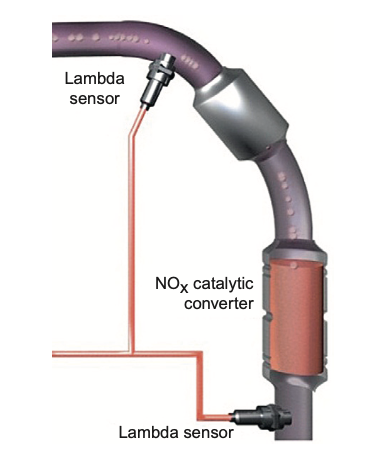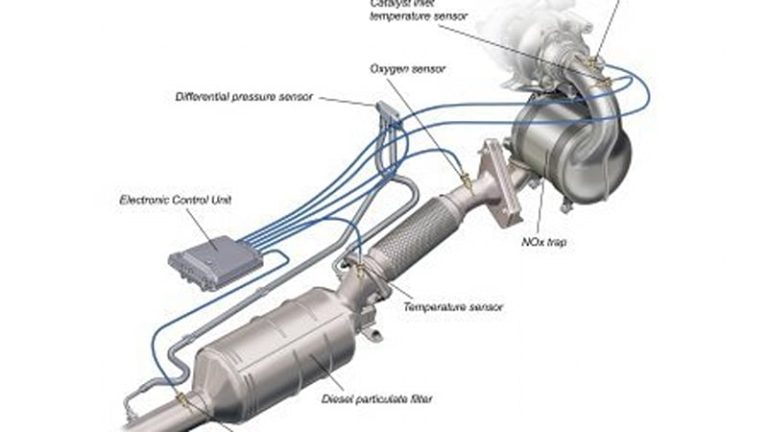Nitrogen oxides, or NOx, are a family of highly reactive gases that are produced by combustion processes. They are a significant contributor to air pollution and are known to cause a range of health problems, including respiratory illnesses and cardiovascular disease. To combat this issue, catalytic converters have been developed to reduce NOx emissions.
A NOx catalytic converter is a device that is installed in the exhaust system of an internal combustion engine. Its purpose is to reduce the emissions of nitrogen oxides that are produced during the combustion process. The converter works by converting the NOx gases into less harmful substances, such as nitrogen, water, and carbon dioxide.
There are several different types of NOx catalytic converters, each with its own specific technology. One of the most common types is the selective catalytic reduction (SCR) converter. This type of converter uses a catalyst and a reducing agent, typically ammonia or urea, to convert NOx into nitrogen and water. The reducing agent is injected into the exhaust stream, where it reacts with the catalyst to break down the NOx molecules.
Another type of NOx catalytic converter is the lean NOx trap (LNT) converter. This type of converter uses a combination of precious metals and metal oxides to trap and store NOx emissions during the lean-burn cycle of the engine. During the rich-burn cycle, the stored NOx is converted into nitrogen and carbon dioxide.
There is also a type of NOx catalytic converter known as the diesel oxidation catalyst (DOC). This type of converter is specifically designed for diesel engines and works by oxidizing the exhaust gases to reduce the amount of NOx emissions.

NOx catalytic converters have been found to be very effective in reducing the emissions of nitrogen oxides. They are used in a variety of applications, including cars, trucks, buses, and power plants. They are also becoming increasingly popular in the marine industry, where they are used to reduce emissions from ships and boats.
However, there are some limitations to the use of NOx catalytic converters. One of the main limitations is that they are less effective at low temperatures. This means that they may not work as well in cold climates or during the winter months. In addition, the use of some types of NOx catalytic converters, such as SCR converters, requires the injection of a reducing agent into the exhaust stream, which can be costly and require additional maintenance.
In conclusion, NOx catalytic converters are an important technology for reducing the emissions of nitrogen oxides. They are used in a variety of applications and have been found to be very effective in reducing air pollution. However, they do have some limitations, particularly at low temperatures, and may require additional maintenance and cost. Despite these limitations, NOx catalytic converters remain a vital tool in the fight against air pollution and the promotion of cleaner air for all.
As mentioned earlier, NOx catalytic converters are designed to reduce the emissions of nitrogen oxides that are produced during combustion processes. These emissions are a major contributor to air pollution and are known to have negative impacts on human health and the environment.
The effectiveness of a NOx catalytic converter depends on several factors, including the type of converter, the temperature of the exhaust gases, and the engine’s operating conditions. For example, SCR converters are highly effective at reducing NOx emissions, but they require the injection of a reducing agent, which can be expensive and require additional maintenance.
LNT converters are also effective, but they have limitations, particularly when it comes to heavy-duty diesel engines. In these engines, the amount of NOx emissions can be very high, and LNT converters may not be able to trap all of the emissions.
Another important factor that can affect the performance of NOx catalytic converters is the presence of other pollutants in the exhaust stream. For example, sulfur dioxide (SO2) can react with the catalysts in the converter and reduce its effectiveness.
Despite these limitations, NOx catalytic converters have been shown to be highly effective at reducing nitrogen oxide emissions in a range of applications. In fact, they are one of the most important tools in the fight against air pollution.
In recent years, there has been a growing interest in developing new and innovative NOx catalytic converters that are even more effective and efficient than existing technologies. Some of these new technologies include advanced SCR systems that use novel catalysts and reducing agents, as well as new types of LNT converters that can store more NOx and operate over a wider range of engine conditions.
Overall, NOx catalytic converters are an important technology for reducing air pollution and promoting cleaner air for all. While they do have some limitations, ongoing research and development are likely to lead to even more effective and efficient NOx catalytic converters in the future.
Advantages:
- Reduced emissions: One of the primary benefits of NOx catalytic converters is that they significantly reduce the emissions of nitrogen oxides, which are harmful pollutants that can cause respiratory problems, acid rain, and other environmental issues.
- Improved air quality: By reducing NOx emissions, NOx catalytic converters help to improve air quality, which is especially important in areas with high levels of air pollution.
- Regulatory compliance: Many countries have regulations in place that require vehicles and industries to reduce their emissions of nitrogen oxides, and NOx catalytic converters help to meet these regulations.
- Versatile: NOx catalytic converters can be used in a wide range of applications, from cars and trucks to power plants and ships.
Disadvantages:
- Temperature limitations: Some types of NOx catalytic converters are less effective at low temperatures, which can be a problem in colder climates or during the winter months.
- Additional maintenance: Some types of NOx catalytic converters, such as SCR converters, require the injection of a reducing agent into the exhaust stream, which can be expensive and require additional maintenance.
- Limited lifespan: NOx catalytic converters have a limited lifespan and may need to be replaced periodically, which can be costly.
- Reduced performance: In some cases, the use of NOx catalytic converters can reduce engine performance, particularly in diesel engines, which can be a concern for some users.
Overall, while NOx catalytic converters have some limitations and drawbacks, they remain an important technology for reducing air pollution and promoting cleaner air. Ongoing research and development are likely to lead to even more effective and efficient NOx catalytic converters in the future.










